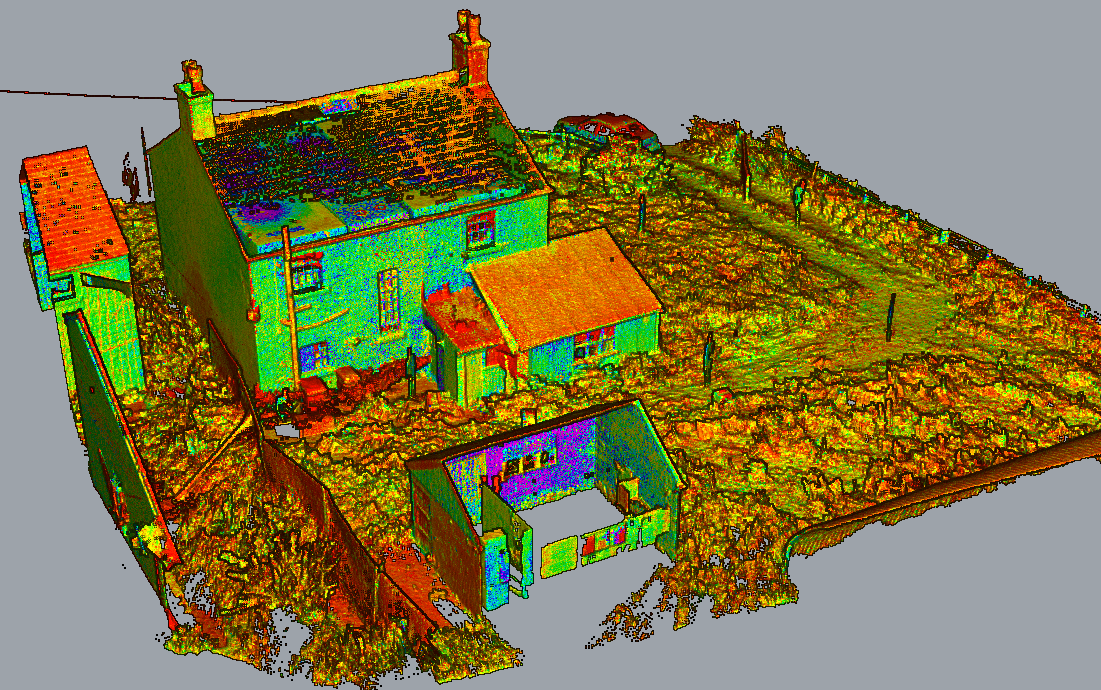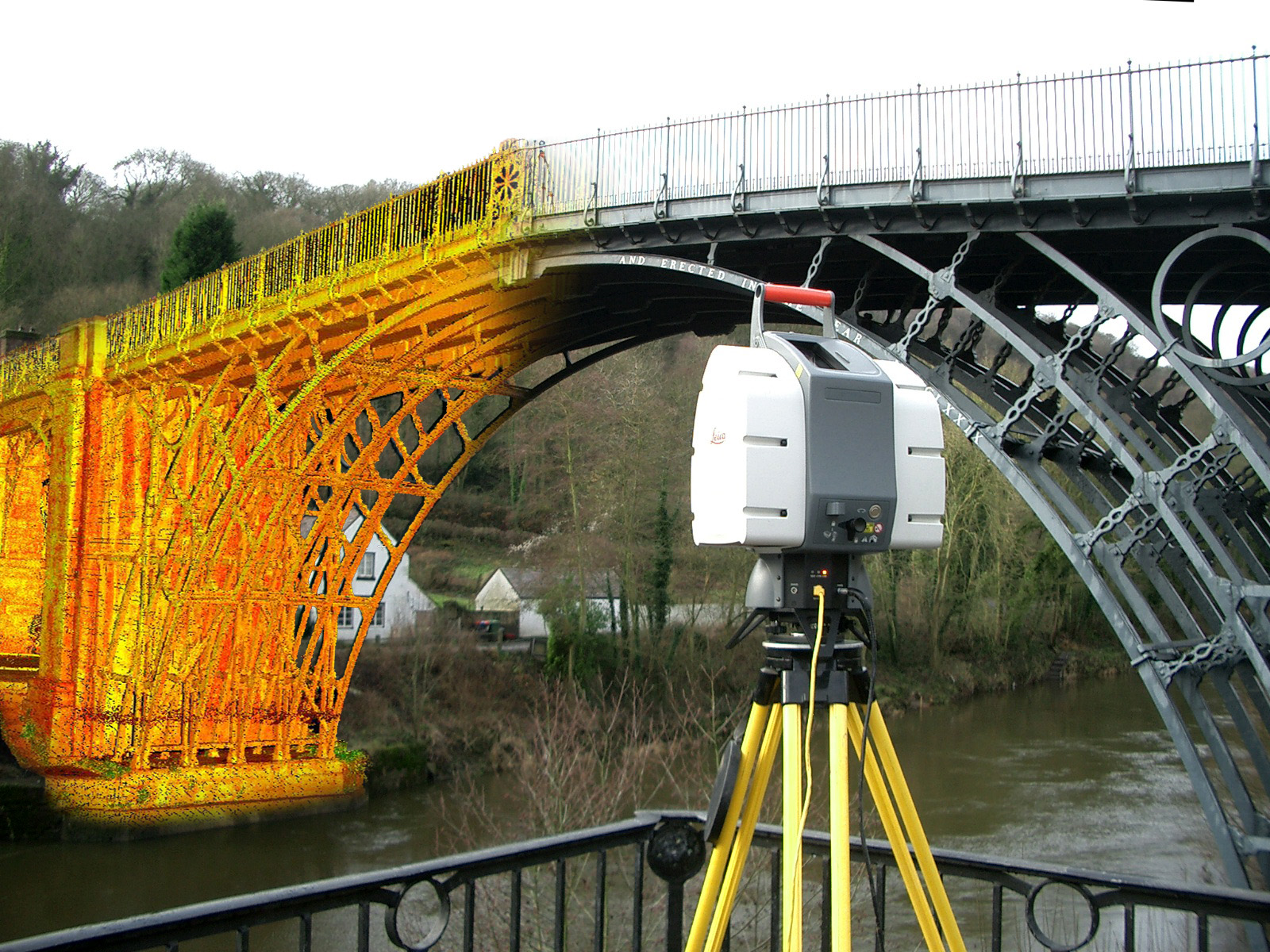Discovering the Applications of 3D Laser Scanning in Archaeology and Cultural Heritage Preservation
The integration of 3D laser scanning innovation in archaeology and cultural heritage preservation marks a significant advancement in exactly how historic websites and artefacts are documented and assessed. This non-invasive method supplies exact spatial data, disclosing elaborate details that were previously hard to capture. As the applications of this innovation continue to progress, different implications for preservation, education and learning, and documents emerge, inviting further expedition into its transformative influence on the area.
Understanding 3D Laser Scanning Innovation
3D laser scanning technology has actually changed the field of archaeology by giving detailed and accurate spatial information. This sophisticated technology employs laser beam of lights to capture numerous data factors from an item or website, developing a very accurate three-dimensional representation (3D Scanning). The resulting factor clouds can disclose detailed information of historical sites, structures, and artifacts that could be unseen to the naked eye
Utilizing this technology, excavators can record the precise measurements, forms, and settings of things with unmatched precision. This technique decreases the threat of human error and eliminates the need for considerable hands-on measurements. Furthermore, the information collected can be evaluated and shared conveniently, helping with cooperation among scientists. By incorporating 3D laser scanning with GIS and various other electronic tools, archaeologists improve their capability to envision and analyze historic contexts, resulting in deeper understandings into old societies and atmospheres.
Enhancing Archaeological Documentation
3D laser scanning substantially enhances archaeological documents via its capacity to develop accurate site maps. This technology promotes in-depth artifact analysis, giving insights that traditional techniques may ignore. Furthermore, it guarantees the conservation of contextual data, which is essential for understanding the relationships within archaeological websites.
Accurate Website Mapping
While conventional mapping approaches frequently have a hard time with capturing the detailed information of historical sites, progressed laser scanning technology supplies an advanced technique to exact website mapping. This technique allows archaeologists to create very detailed and specific three-dimensional depictions of websites, showcasing topographical variations and structural attributes with remarkable integrity. The ability to record millions of information factors in an issue of minutes permits for comprehensive documentation, which can be quickly upgraded and shared among researchers. In addition, laser scanning facilitates the measurement of complicated geometries that would certainly be difficult to assess utilizing traditional tools. As an outcome, this technology boosts the precision of website maps, contributing significantly to the conservation and understanding of social heritage sources.
Comprehensive Artifact Analysis
Laser scanning modern technology greatly boosts the evaluation of archaeological artefacts, offering researchers with unmatched detail and precision. This method records complex surface textures, dimensions, and features that standard paperwork strategies may ignore. By generating high-resolution 3D versions, scholars can carefully analyze artefacts without the risk of damage intrinsic in physical handling. This precision allows for better relative research studies, making it possible for experts to recognize production strategies, stylistic variations, and potential cultural relevance. In addition, the capacity to control and picture information in three measurements promotes a much deeper understanding of artefact functionality and usage. Overall, laser scanning promotes a much more complete approach to historical documentation, making sure that important info regarding artifacts is preserved for future research and education.
Preservation of Contextual Information
Maintaining contextual information is vital for boosting historical paperwork, as it assures that findings are comprehended within their initial ecological and social structures. 3D laser scanning technology significantly adds to this conservation effort by recording in-depth spatial relationships amongst artifacts, frameworks, and their settings. By creating accurate 3D models, excavators can record the precise locations and positionings of items in situ, promoting a detailed understanding of their context. This technology makes it possible for researchers to take another look at and analyze websites long after excavation, keeping the stability of contextual information. Furthermore, digital records developed through scanning can be shared worldwide, promoting collaborative study and public interaction. Inevitably, preserving contextual information via 3D laser scanning enriches archaeological stories and promotes a more profound appreciation of social heritage.
Conservation of Cultural Heritage Sites
As developments in innovation remain to progress, the preservation of social heritage sites has come to be significantly reliant on ingenious approaches such as 3D laser scanning. This modern technology enables the detailed documents of artifacts, frameworks, and landscapes, capturing their specific measurements and spatial relationships in a non-invasive fashion. By producing high-resolution 3D designs, scientists can keep an eye on and assess damage patterns, making it possible for aggressive conservation approaches.
Additionally, 3D laser scanning facilitates the sharing of comprehensive site information with the worldwide community, advertising partnership amongst preservationists, archaeologists, and chroniclers. These versions act as important sources for education and public involvement, raising awareness of social heritage concerns. The electronic documents produced can protect versus loss due to ecological aspects, criminal damage, or neglect. Generally, 3D laser scanning represents a transformative method to the preservation of social heritage, guaranteeing that these websites can be researched and valued by future generations.

Restoration and Reconstruction Efforts
The thorough paperwork accomplished via 3D laser scanning plays a substantial duty in restoration and restoration initiatives within archaeology. This technology supplies accurate dimensions and high-resolution imagery, enabling precise electronic versions of frameworks and artefacts. These models work as crucial references during remediation processes, enabling archaeologists to make and visualize the original design educated choices about products and strategies required for repair work.
3D laser scanning assists in the repair of harmed or shed components by developing thorough reproductions. This process aids in making certain that restorations keep historical stability while likewise enabling innovative approaches to recover sites. The ability to examine wear patterns and architectural weak points through scanned information boosts understanding of a site's historical context and its use over time. 3D laser scanning not just protects the physical elements of cultural heritage however additionally improves the story of background, assisting future reconstruction ventures.
Educational and Study Opportunities
The assimilation of 3D laser scanning in archaeology opens up significant academic and research study possibilities. Academic collaborations can enhance the understanding of old websites, while specialized training workshops equip professionals with essential skills for utilizing this innovation. Together, these campaigns cultivate a richer engagement with archaeological methods and approaches.
Academic Collaborations in Archaeology
Joint efforts in archaeology have become progressively essential for progressing both educational and study possibilities. By fostering partnerships among colleges, research organizations, and social heritage organizations, these cooperations assist in the exchange of knowledge and sources, improving the quality of archaeological research studies. Joint jobs often utilize diverse know-how, enabling for ingenious techniques and extensive evaluations, specifically in the application of innovations like 3D laser scanning. Such partnerships also promote interdisciplinary approaches, engaging fields such as background, location, and preservation science. In addition, scholastic partnerships typically cause the advancement of new educational programs and training programs, preparing the following generation of excavators to properly use advanced technologies in their work. Ultimately, these alliances add to the conservation and understanding of social heritage.
Training Workshops for Professionals
Educating workshops for specialists in archaeology are increasingly crucial for improving skills in the application of sophisticated modern technologies such as 3D laser scanning. These workshops supply participants with hands-on experience in making use of innovative equipment and software program, fostering a deeper understanding of information capture and analysis processes. Experts can discover to develop accurate electronic models of historical sites, which significantly aid in documents and conservation initiatives. Additionally, these training sessions typically consist of discussions on best techniques and study, advertising knowledge exchange amongst participants. By spending in continual education and learning, professionals can stay updated on advancing technologies, ultimately enhancing the efficiency of their research and social heritage preservation efforts. This dedication to ability improvement is essential for progressing the area of archaeology.
Future Trends in 3D Laser Scanning for Archaeology
As developments in technology remain to improve different areas, the future of 3D laser scanning in archaeology promises to improve both the precision and efficiency of website paperwork and analysis. Emerging patterns suggest an expanding assimilation of fabricated intelligence and artificial intelligence, promoting automated information processing and analysis. This evolution will allow archaeologists to analyze complicated datasets quicker, bring about faster insights right into historical contexts.
Moreover, the integration of drone modern technology with 3D laser scanning is likely to expand, making it possible for comprehensive aerial surveys of archaeological sites that are hard to gain access to. The enhancing cost of scanning tools will equalize gain access to, encouraging smaller organizations and independent researchers to utilize these tools properly. Furthermore, improvements in digital fact and visit increased truth will enable immersive experiences for public engagement and education and learning, making historical searchings for a lot more available and interactive. These patterns collectively signal a transformative future for archaeology, boosting preservation efforts and expanding the discipline's outreach.
Often Asked Questions
Just How Much Does 3D Laser Scanning Equipment Price?

What Are the Limitations of 3D Laser Scanning?
The constraints of 3D laser scanning consist of high costs, possible information handling difficulties, sensitivity to ecological conditions, and problem recording elaborate details in complex surfaces, which can impact the accuracy and efficiency of checked representations. (3D Scanning)

Can 3D Laser Scanning Be Used Undersea?
Yes, 3D laser scanning can be used undersea, however it requires customized tools and strategies to get rid of challenges such as water distortion and restricted visibility. Effective applications have actually been demonstrated in aquatic archaeology and undersea studies.
The length of time Does a Scanning Task Generally Take?
A scanning job normally takes anywhere from a couple of days to numerous weeks, relying on the complexity and dimension of the area being checked, along with the prep work and post-processing needs entailed in the project.
Exist Certain Software Demands for Processing 3D Checks?
Yes, details software requirements for refining 3D scans consist of programs with the ability of handling large factor clouds, such as Autodesk Wrap-up, Cyclone, or MeshLab. These devices help with evaluation, visualization, and integration right into various applications effectively.
The integration of 3D laser scanning technology in archaeology and cultural heritage preservation marks a substantial improvement in just how historic websites and artefacts are recorded and evaluated. 3D laser scanning technology has actually changed the area of archaeology by providing accurate and comprehensive spatial data. As improvements in modern technology proceed to develop, the conservation of social heritage websites has ended up being increasingly reliant on innovative methods such as 3D laser scanning. As innovations in modern technology continue to reshape different areas, the future of 3D laser scanning in archaeology guarantees to improve both the precision and effectiveness of website paperwork and analysis. The combination of drone technology with 3D laser scanning is likely to why not find out more increase, allowing comprehensive airborne surveys of historical websites that are hard to accessibility.